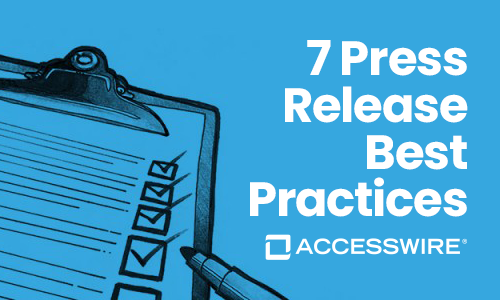The Importance of ADA & Security Compliance for Investor Relations Websites
Investor relations communications have moved from almost entirely paper-driven to digital. As that trend continues and technology recreates itself, public companies in the United States and Canadian corporate and government agencies are required to create websites that are digitally inclusive and compliant under the Americans with Disabilities ACT (ADA) of 1990 and the Accessible Canada Act (ACA) of 2019.
Unfortunately, many companies don’t maintain their IR site compliance. Here, we will explain the importance and steps of website accessibility, and how you can maintain inclusion without barriers for all your visitors.
Why Do IR Websites Need To Be Accessible?
Imagine a scenario where you have landed a free ticket to attend the most sought-after event in the history of Earth [whatever that might be in your brain]. You are thrilled by the prospect of being one of only a few thousand people who will experience this exciting event.
Once you get there, however, you realize that your ticket only gets you into a sensory deprivation room where you cannot see nor hear what everyone else at the event can experience first-hand.
For many people with varying levels of visual or hearing impairment, this kind of scenario is commonplace, while not as extreme as the fictional one above.
But it’s 2023, and the business world increasingly embraces the idea that Diversity, Equity and Inclusion (DEI) are key to success.
Businesses around the world, large and small, are realizing that leaving an entire audience high and dry is not a good foundation on which to build and grow a company.
The right thing to do is ensuring potential shareholders, stakeholders, and investors are invited to learn about your company is the right thing to do.
Government entities are also getting serious about inclusion, as well; consider this statistic:
In the U.S., ADA compliance-related lawsuits have risen by 255% within the last five years. It has been estimated that 20% of the population has impairment needs, but only 2% of the internet has accessible websites for those with physical and cognitive impairment; considering the vastness of the Worldwide Web, that’s not very impressive.
According to The Centers for Disease Control and Prevention’s website, 61 million people in the U.S. live with disabilities.
People who were teenagers or older in 1990 probably remember when the Americans with Disabilities Act was signed into law, ushering in a new way of thinking when it came to people with disabilities.
As a result, government buildings were required to be accessible to those with mobility challenges, and corporate America soon fell in line.
Wheelchair-accessible ramps and doorways were altered to accommodate visitors and workers throughout the land; also included in these changes were people with varying degrees of hearing and sight impairments, as well.
Shortly after that, you may remember noticing that places like elevators and hotel rooms offered Braille, and audio was added in numerous places for people whose sight was compromised.
Now, consider how the internet is like a building: Most websites do not conform to users with disabilities, including people with motor skills, cognitive, and speech challenges.
Online entry isn’t necessarily guaranteed. That is changing and will continue to do so.
On March 18, 2022, the Department of Justice released guidelines on accessibility.
In its report, the agency noted that the ADA's requirements apply to goods and/or services, all activities and/or privileges offered by public accommodations, including website offerings. The guidelines included characteristics of inaccessible websites for disabled people, including:
Poor color contrast, and/or reliance on color to provide information (for people who have issues with color blindness)
- Missing text alternatives, also known as alt-text, on website images
- Videos where there are no captions provided
- Online forms that are not available for people with auditory or vision challenges
- Keyboard navigation options rather than mouse-directed
What Accessibility Means For Business Audiences
Before we get into details about the various technologies involved in compliance, let’s look at the advantages of IR site accessibility for your company, your shareholders and investors, and your clients/customers.
First, it’s the law; public companies who don’t provide alternate site accessibility can and will be held responsible for not complying. It’s that simple. Compliance keeps businesses from costly fines and lawsuits, so you must produce a compliance plan unless your company has a penchant for losing money. (We will offer help at the end of this blog, so stay with us.)
Second, if you could find a new way to open your company’s services or products to an audience that increases by 20% than your current one has, would you give that way a try?
Of course, you would.
Opening your IR site to ADA/ACA compliance has the potential to do just that because that’s roughly the percentage of people who are looking for companies that include them.
Let’s hear it for brand awareness!
The Department of Justice concluded that businesses open to the public must be able to provide communication options to everyone when it comes to company websites and online marketplaces.
Third, as far as Investor Relations are concerned, websites are considered the most important and trusted place to find information about a company.
Due to the Covid-19 pandemic, businesses worldwide had to pivot to online information.
Today’s reality includes a strong expectation that the user experience for all current and potential investors is as complete and seamless as possible, without barriers for those with any impairment level.
In other words, it is up to all businesses to remove all barriers that preclude the estimated 1.3 billion people living with impairment challenges they may experience online.
IR Site Compliance Terms To Know
So, now that you have the background and reasoning behind why IR sites must maintain compliance with ADA/ACA laws, it’s time to discover what companies need to provide people with disabilities equal access to information.
Today’s reality includes a strong expectation that the user experience for all current and potential investors is as complete and seamless as possible, without barriers for those with any impairment level.
In other words, it’s up to all businesses to remove all barriers that preclude the estimated 1.3 billion people living with impairment challenges may experience online.
WCAG: Short for Web Content Accessibility Guidelines, WCAG is the standard by which web accessibility laws in most companies worldwide. The 440 people who set the guidelines work on behalf of business leaders, non-profits, colleges and universities, governments, and regulated industries, among others.
The protocols involve web tools that work in conjunction; three standards bring websites to compliance: A, AA, and AAA.
Accessibility was the earliest the committee addressed in 1999; the guidelines were updated and revised in 2008 when WCAG 2.0 was issued, and then again in 2018.
WCAG’s primary focus is on creating HTML coding that provides accessibility. Countries worldwide have adopted WCAG standards, with some governments requiring that all websites comply with the standards; others require compliance only for their government’s online entities.
Today, WCAG 2.2, an updated version of these guidelines, exists.
WCAG guidelines are based on four principles (often referred to as POUR):
Perceivable - Information and user interface components must be presented to users with disabilities in ways they can perceive.
For example, it’s important to present information that can be perceived in different ways, where a user can adjust color contrast or font size, or view captions for videos.
Operable - User interface components and navigation must be operable to users in ways they can operate.
For example, required interactions can be performed using keyboard or voice commands.
Understandable - Information and user interface operation must be understandable.
For example, information and instructions are clear, and navigation methods are easy to understand and use.
Robust - Content must be robust enough to be interpreted reliably by various users and types of assistive technologies.
As technologies evolve, code and content should remain accessible for users of standard and current assistive devices and tools.
Section 508: According to Wikipedia, the US Congress amended the Rehabilitation Act in 1997 “to require Federal agencies to make their electronic and information technology accessible to people with disabilities.”
Section 508 was included to “eliminate barriers in information technology, to make available new opportunities for people with disabilities, and to encourage development of technologies that will help achieve these goals.”
An overview of Section 508 technological standards includes:
- Software applications and Operating Systems, including accessibility to software (such as keyboard navigation and focus via a web browser)
- Web-based intranet, and internet information applications that provide accessibility for all to web content
- Telecommunications products that provide accessibility for devices like cell phones or voice mail systems, including compatibility with hearing aids, listening devices, and other tools used by hearing impaired people (like TTY)
- Videos or multimedia products that provide captioning and audio description of multimedia products
- Products that end users cannot use or connect to their own technology tools, like information kiosks, copiers, and/or fax machines
For more information, visit https://www.section508.gov/manage/laws-and-policies/
ADA Title III: Title III of the Americans with Disabilities Act requires virtually every U.S. business that provides goods and services to the public to make its products and facilities accessible to individuals with disabilities.
As Promised… Help with IR Site Compliance
We would be remiss if we didn’t mention that ACCESSWIRE’s parent company, Issuer Direct Corp. (NYSE: ISDR) now offers a product that allows companies to be in ADA/ACA Compliance.
IR Site Pro is an innovative platform that raises the bar for investor relations website management.
IR Site Pro offers a robust, user-friendly content management system that allows you to edit your own content 24/7/365, rather than waiting for someone else to make changes for you.
Other features include sleek new design templates, expanded color palettes and fonts, and Alt Image Text enhancements that will breathe new life into your brand.
IR Site Pro is ADA and ACA compliant and is available either to existing customers whose IR websites are already hosted by Issuer Direct, or to customers needing a new, state of the art Investor Relations website.
For more information or to schedule a demo of IR Site Pro, click here.
Similar Blog Posts
PRODUCTS
ACCESSWIRE | All Rights Reserved





